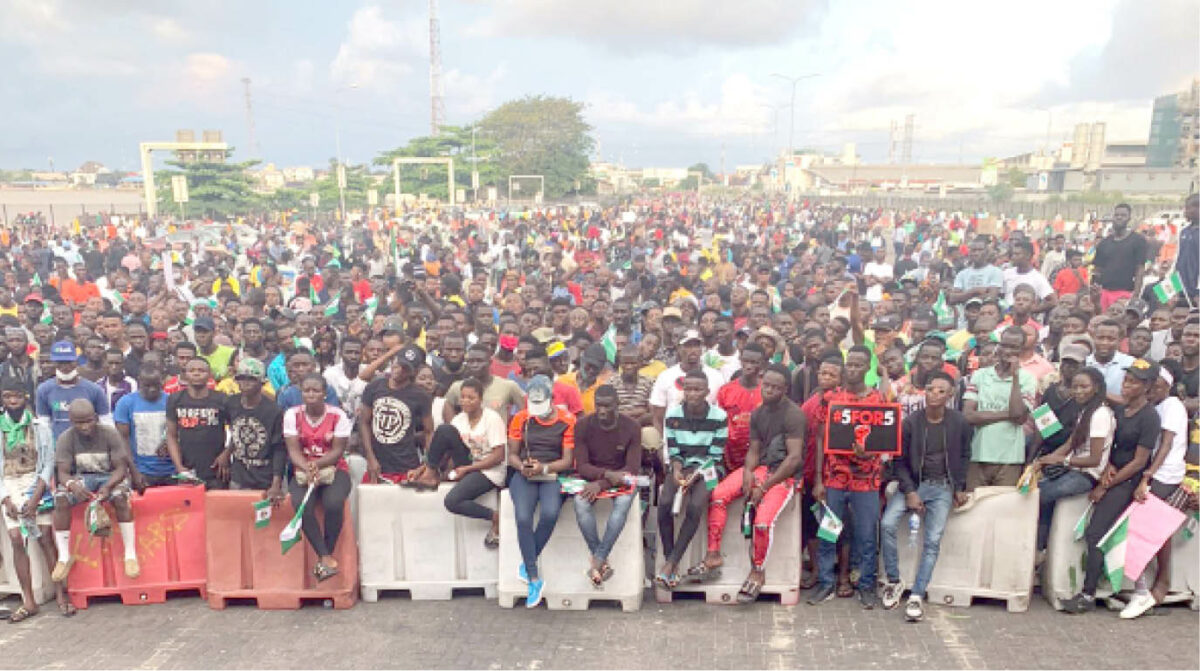It was Winston Churchill who once said “Never let a good crisis go to waste.” Over the past two weeks, the country was suddenly gripped with EndSARS protests which saw a spontaneous eruption of protests by tens of thousands of youths unto the streets of multiple cities to protest police brutality.
Aided by Social media, notably through the #EndSARS campaign on twitter which topped global trends over the past two weeks, the protesters were able to organise for peaceful protests, mobilise logistics, supplies including food, medical assistance and in some cases even private security.
- Nigeria Mulls Exit From Some Int’l Organisations
- Benue Declares Fridays Work-Free For Civil Servants
Such instances are not uncommon in history especially with countries that have large youth populations.
In Philippines, one million youths mobilised and sent text messages which brought down the government of Joseph Estrada in what was referred to as the first ‘Coup de Text in history’.
The Arab spring was also largely fuelled by social media. At the root of all these protests is social inequality.
Nigeria has a high Gini Coefficient. The Gini Coefficient is a measure of income distribution across a population, invented by Italian statistician Corrado Gini. It basically reflects the levels of inequality in a society, and a perfectly equal society will have a Gini Coefficient of Zero.
Over the years, Nigeria’s population has steadily increased, from about 42 million at independence in 1960 to about 200 million today, and this is projected to increase to about 400 million by 2040. With this increase in population also comes increase in poverty levels, unless if GDP growth rate outperforms population growth rate. Nigeria has the second highest number of people living in extreme poverty according to the World Bank.
Perhaps one takeaway from the current crises is that the initial protest which was largely peaceful and organised, was about police brutality, which was acknowledged by the government as a genuine concern and subsequently led to the disbandment of the notorious SARS unit. The second part of the protests which was uncoordinated, and later turned out to be violent, with destruction of properties, government buildings and massive looting was a combination of poverty, anger, as well as resent against the ruling class and the elite, which takes us back to the question of Gini Coefficient.
The large population of youth is both our strength and our weakness. The earlier we rethink and provide Jobs, opportunities, education and basic healthcare for ALL not FEW, the better.
The protests have, once again, brought police reforms to the front burner and is getting the necessary priority. Equally important is the task of providing jobs and opportunities to the teeming army of youth estimated at about 50 million.
Going forward, the next plan is for the government to mobilise eggheads and seasoned development experts with a view to developing a Blueprint for a Marshall Economic plan for the Youth. Targeting labour intensive activities such as agriculture, mining and construction.
A five-to-10 year rolling plan can be developed with specific target areas and milestones. Initiatives like Tradermoni, Farmermoni, Marketmoni, N-Power, N-Tech and N-Agro can be consolidated and given the highest priority.
The protests have ended for now, but a longer term and fully coordinated Youth Empowerment strategy is required in order to mitigate future occurrence.
Muhammed Santuraki writes from Doha. ([email protected])

 Join Daily Trust WhatsApp Community For Quick Access To News and Happenings Around You.
Join Daily Trust WhatsApp Community For Quick Access To News and Happenings Around You.

